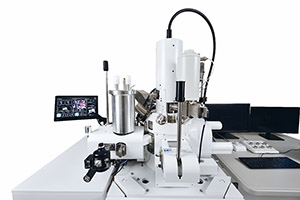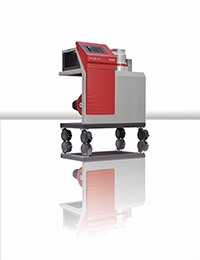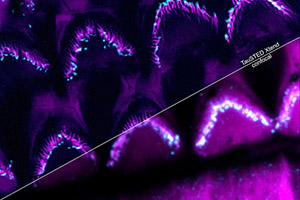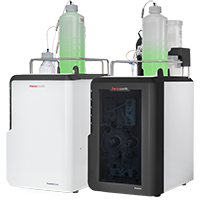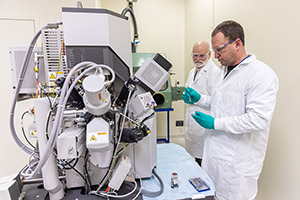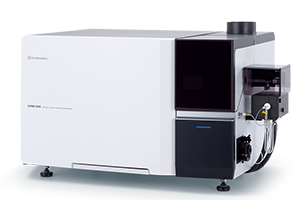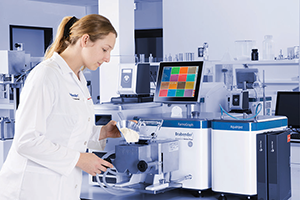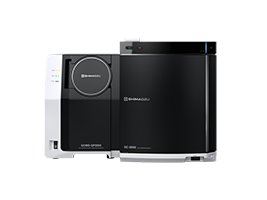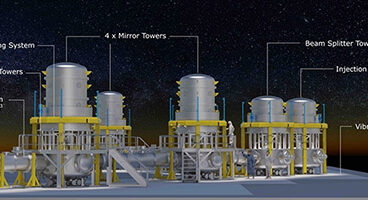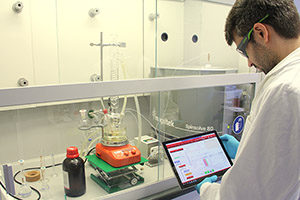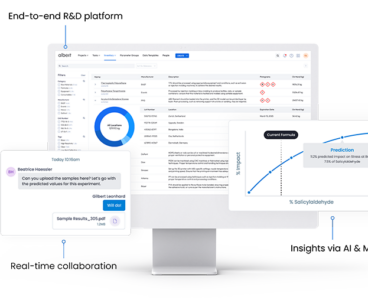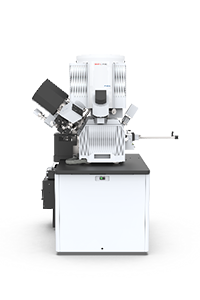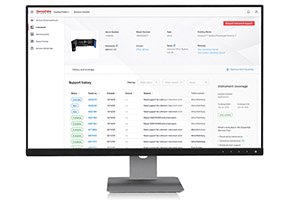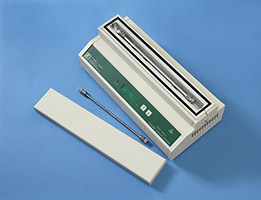R&D scientific software provider Dotmatics announces the launch of Luma Lab Connect, which helps R&D laboratories automatically ingest data from instruments or data sources and centralize it in one place to increase accuracy and accelerate decision-making. Luma Lab Connect extracts descriptive metadata and experiment results from files and makes data available across labs and experiments…
The great lab of the future debate: Modular or singular approach?
Technology is transforming all facets of our lives, and even the most entrenched industries are evolving in exciting ways. In spaces that rely on R&D, the lab of the future represents a way to execute scientific advancements more quickly and efficiently than ever before — and with greater precision. As such, innovation can thrive. It…
JEOL’s new CRYO-FIB-SEM enables specimen preparation for cryo-electron microscopy
JEOL announces the introduction of the CRYO-FIB-SEM, a Focused Ion Beam milling specimen preparation tool designed for creating thin, frozen samples for Cryo-Electron Microscopy. The new system complements JEOL’s existing Cryo-TEM technology, providing a comprehensive solution for preparing and imaging vitreous frozen biological and biopolymer samples to be observed in the CRYO ARM 200 and…
Pfeiffer Vacuum introduces new HiCube Neo Turbo Pumping Station
With pumping speeds ranging from 80 to 800 l/s, the HiCube Neo vacuum pumping station is suitable for demanding high vacuum and ultra-high vacuum applications. The HiCube Neo can be prepared for wide-ranging applications with various backing pumps such as diaphragm, rotary vane, scroll, and multi-stage Roots pumps. This makes the new turbo pumping station…
Power to see more with improved resolution and light dose balance
Leica Microsystems, a maker of microscopy and scientific instrumentation, introduces TauSTED Xtend, a new STED microscopy approach that enables extended multicolor live cell imaging at nanoscopic resolution. By combining spatial and lifetime information, TauSTED Xtend resolves details of live or intact specimens at nanoscale. At the same time, access to that extra level of information…
Shimadzu Scientific Instruments and Telescope Innovations form partnership
Shimadzu Scientific Instruments Inc. (SSI), a maker of analytical instrumentation for chemistry research and development, announces that it is engaged in a technology integration partnership with Telescope Innovations Corp., a developer of enabling technologies for the global pharmaceutical and chemical industries. The partners aim to integrate SSI’s High-Performance Liquid Chromatography (HPLC) systems with Telescope’s flagship…
Driving sustainability through more eco-friendly laboratory equipment choices
Working in a laboratory, you cannot help but notice the amount of waste material and energy use that comes from experiments. From the frequent use of single-use plastics and a reliance on transnational shipping of reagents, to the dependency on high-energy-consumption equipment like -80° C freezers for the long-term storage of samples, there is…
Shimadzu introduces powerful systems with the smallest footprints at Pittcon 2024
Several new Shimadzu instruments were introduced at the first day of Pittcon 2024 in San Diego and R&D World was there for it. Among the company’s latest laboratory offerings are the high-performance Brevis GC-2050 gas chromatograph system and the GCMS-QP2050 single quad gas chromatograph mass spectrometer. “The Brevis GC-2050 is our newest GC instrument and…
Thermo Fisher Scientific’s ion chromatography instrument improves lab adaptability
To support a wider range of ion chromatography analysis with one instrument, Thermo Fisher Scientific has launched the Thermo Scientific Dionex Inuvion Ion Chromatography (IC) system, helping to make ion analysis simpler and more intuitive for labs of all sizes. The new analytical instrument is designed to be easily reconfigurable, providing those who require the…
Sparking innovation for research
From the University of Missouri For more than half a century, the University of Missouri has been a leader in nuclear science and engineering research thanks to the MU Researcher Reactor (MURR), the highest-powered research reactor at any university in the country. Building on MURR’s internationally recognized level of excellence, the university is looking into…
Hemco’s AirFlow Monitor continuously monitors face velocity
The Hemco AirFlow Monitor is a device that continuously monitors the face velocity airflow of a fume hood. It allows you to select and calibrate the desired FPM velocity set point. In case the hood face velocity falls below the set point, an audible alarm and a visual red indicator light will appear, alerting you…
Shimadzu’s new mass spectrometer series provides eco-friendly elemental analysis
Shimadzu Scientific Instruments introduces the ICPMS-2040/2050 series of inductively coupled plasma mass spectrometers that feature a proprietary advanced mini-torch system, a redesigned collision/reaction cell, and a high-performance quadrupole mass filter with enhanced resolution. The ICPMS-2040/2050 series is ideal for analyzing the concentration of inorganic elements in solution samples in environmental, pharmaceutical, clinical, food, chemical, and…
The National Science Foundation funds Bruker NMR installation at The Ohio State University
Bruker Corporation, a provider of nuclear magnetic resonance (NMR) spectroscopy solutions for life and materials research, announces the successful installation of a 1.2 GHz NMR system at the National Gateway Ultrahigh Field NMR Center at The Ohio State University. Ultra-high field NMR is complementary to other structural biology technologies in that NMR can measure functional…
Brabender becomes part of Anton Paar, maker of laboratory instruments
Anton Paar, a maker of laboratory and process measurement technology, announces a new chapter in the company’s journey. At the beginning of 2024, Anton Paar took over the global sales and service network of Brabender, a company it acquired in August 2023. Anton Paar’s 37 global sales and service centers adds value for customers. These…
Shimadzu’s new next-generation GCMS provides sensitivity, stability, and speed
Shimadzu Scientific Instruments introduces its next-generation gas chromatograph mass spectrometer — the GCMS-QP2050. Powered by advanced automated technology in a compact footprint, the GCMS-QP2050 features exceptional reliability, sensitivity, stability, and speed in an easy-to-use system. It can be partnered with Shimadzu’s high-end Nexis GC-2030 or compact Brevis GC-2050 to meet customers’ performance and space requirements.…
Monash harnesses new frontier in technology to propel promising local drug discoveries
The Monash Institute of Pharmaceutical Sciences (MIPS) has unveiled a brand new instrument — the Thermo Scientific Orbitrap Astral Mass Spectrometer (MS) — which will play a key role in enabling the team to identify promising drug targets for academia and industry efficiently. The new Orbitrap Astral MS, located at MIPS in Parkville, is the…
BUMAX chosen for the Einstein Telescope project
Swedish specialist fastener manufacturer BUMAX has been selected to supply premium fasteners to ETpathfinder, an R&D facility at Maastricht University for testing and prototyping innovative concepts and enabling new technologies for the Einstein Telescope (ET). The Einstein Telescope is a next-generation underground gravitational wave observatory. The ET is being developed to be 100 times more sensitive…
Magritek opens up benchtop NMR to new reaction monitoring applications
Magritek has made benchtop NMR suitable for the rapid identification and quantitation of analytes during chemical reactions, in batch and continuous flow processes. This significant advancement in NMR has been achieved by Magritek thanks to the improved magnet performance of its Spinsolve ULTRA system, which enables effective and robust solvent suppression. Now, scientists can run…
Albert Invent’s Worksheet brings R&D data into a single, connected source
“We are on a relentless pursuit to build the best formulating and product design tool in the market, and with this Worksheet release — a key component of Albert’s end-to-end R&D solution – our vision is quickly becoming a reality. The evolution of the Albert Worksheet is the culmination of 1000s of hours of exemplary…
Shimadzu introduces eco-friendly, space-saving Brevis GC-2050 gas chromatograph
Shimadzu Scientific Instruments introduces the Brevis GC-2050 gas chromatograph with built-in analytical intelligence to deliver best-in-class analytical performance in a space-saving compact design. The eco-friendly Brevis GC-2050 consumes 30% less power than conventional models, minimizes helium gas use, and supports alternative carrier gasses. The width of the Brevis GC-2050 system is only 350 mm (approximately…
Thermo Fisher’s new Plasma-FIB simplifies volume electron microscopy workflows
The new Thermo Scientific Hydra Bio Plasma-Focused Ion Beam (Plasma-FIB) is designed for cell biologists seeking simplified workflows while undertaking volume electron microscopy for cryo or resin-embedded samples. Building on the cross-industry standard Thermo Scientific Helios Hydra DualBeam platform, the Hydra Bio Plasma-FIB is a versatile, multi-application instrument that supports volume electron microscopy and sample…
Thermo Fisher Scientific expands services central platform in the U.S. and Europe
Thermo Fisher Scientific recently announced the expansion of Services Central, its online service platform, for customers across the United States and Western Europe. Customers can now use the platform to access service information on demand and expedite the support process for their analytical instruments and laboratory equipment. With Services Central, customers can save time and…
New chilling/heating HPLC column temperature controller from 4.0° to 100.0° C
Torrey Pines Scientific announces its new EchoTherm Model CO50 Programmable HPLC Column Chiller/Heater. The unit has a temperature range from 4.0° to 100.0° C readable and settable to 0.1° C. The PID control software regulates temperatures to ±0.2° C, even at ambient. The CO50 has a Stable Temperature LED that illuminates when the target temperature…
Thermo Fisher Scientific introduces new liquid chromatography detector
Thermo Fisher Scientific is providing pharmaceutical and biopharmaceutical research organizations and QC laboratories in the industrial and food and beverage sectors with a new liquid chromatography (LC) detector for simple routine isocratic analysis. The Thermo Scientific Vanquish Refractive Index Detector enables the detection of substances that lack UV chromophores and is powered by proven technology.…
Beckman Coulter Life Sciences helps labs comply with Annex 1 regulation deadline
Beckman Coulter Life Sciences, a provider of laboratory automation and innovation, continues its commitment to providing laboratories of all sizes with individualized and tailored support to meet the evolving list of regional and global compliance requirements. Cleanroom laboratories manufacturing sterile medicinal products in the European Union (EU) must make critical changes by August 25, 2023,…



